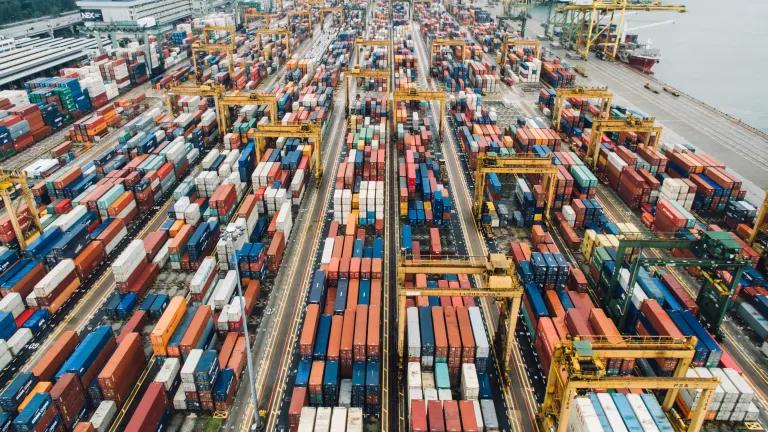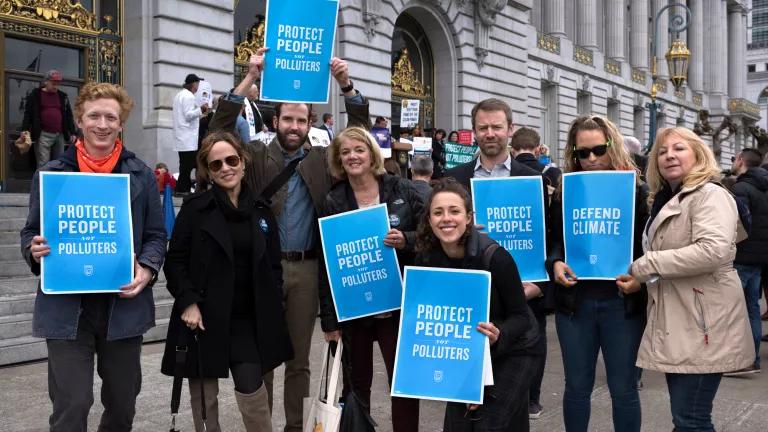Life Alongside Oil Infrastructure in Wilmington, CA
As Congress negotiates over the Build Back Better Act, members are debating whether to include cuts to fossil fuel subsidies.

Elementary school in Wilmington, children view fire at nearby Phillips 66 Refinery
As Congress negotiates over the Build Back Better Act, members are debating whether to include cuts to fossil fuel subsidies. These subsidies were designed, some of them a hundred or more years ago, to encourage companies to extract oil, gas, and coal. Today we know how destructive it is to incentivize that: extraction pollutes our communities, destroys nature, and fuels climate change. Often lost in the debate over esoteric tax policy is the real-world impacts of this industry on the ground. NRDC has worked with local leaders and communities in four locations around the country to understand more clearly how incentivizing the fossil fuel industry harms people. Hearing stories like these from St. James Parish, LA; Wilmington, CA; the Greater Chaco region, NM, and Washington County, PA - can help all of us grasp the urgency of eliminating fossil fuel subsidies. This is the first case study in this series.
Special thanks to Communities for a Better Environment's (CBE) Wilmington team for their research and contributions to this blog.
Wilmington, CA
Oil companies have been producing fossil fuels in the Wilmington community of Los Angeles since the 1930s. Nine square miles near the Los Angeles harbor, Wilmington is now home to hundreds of active oil drilling operations.[1] Five oil refineries also operate within or near its borders.[2] In 2006, Los Angeles city planners gave one company, Warren E & P, permission to drill up to “540 wells and produce up to 5,000 barrels of oil a day” next to the John Mendez Baseball Park, where children of all ages come to play.[3] Neighborhood drill sites, sometimes a few feet from homes, greatly increase and compound a slew of toxic emissions such as benzene, a known cause of cancer.[4] In addition, the industry uses countless trucks and generators that emit high levels of carcinogenic diesel particulate matter into the air.
Over 90% of Wilmington residents are Latinx, with more families living in poverty than 72% of other census tracts in California.[5] Wilmington residents are disproportionately impacted by oil operations. Ashley Hernandez grew up 500 feet from a drilling site in Wilmington.
“There really is no escaping it. I couldn’t go out or have clear air. I felt like a prisoner in my own home.”
She’s a youth organizer with CBE, an organization working to achieve environmental health and justice by preventing and reducing pollution and building green, healthy sustainable communities.[6]
It is not just active wells that exacerbate environmental and health harms in Wilmington. Wells that are no longer producing oil and gas are often left uninspected and unmaintained, some since the 1990s, leaking oil, gas, and other contaminants into the air and local groundwater.[7]
The toxic practices of the oil industry have taken a toll on Wilmington.[8] Residents and their children experience high rates of cancer, miscarriages, frequent nosebleeds, headaches, rashes, and respiratory issues, especially asthma.[9] Residents have breathed stifling dust in the air, experienced loud noise pollution, noxious odors, drilling vibration that damages homes, and even contaminated drinking water.[10] Local residents have described their own neighborhood as “a living hell.”[11]
CBE is a founding member of the Stand Together Against Neighborhood Drilling coalition (STAND-LA).[12] It is fighting to phase out oil drilling city-wide in L.A. and prevent neighborhood exposure to oil drilling hazards. In addition, CBE is spearheading efforts to cut harmful oil refinery emissions, eliminate the use of deadly Modified Hydrogen Fluoride,[13] expose illegal oil refinery and oil drilling permit shortcuts, and completely phase out oil refining by 2050.
Congress Must Act to End Fossil Fuel Freebies Now
Across the country, decision-makers must stop the expansion of and phase out fossil fuel infrastructure in cities like Los Angeles. And at the federal level, Congress must also ensure that we do not further incentivize this dirty and destructive industry through taxpayer dollars. Ending these fossil fuel giveaways is a no-brainer and an essential step in the effort to eliminate the industry’s threat to communities, nature, and the planet’s future.
[1] Long Beach Energy Resources, Historical – Oil Operations, https://longbeach.gov/energyresources/about-us/oil/history/ (last visited June 4, 2021).
[2] Id.
[3] Bettina Boxall, Joe Mozingo, After 10 years, neighbors of a Wilmington oil drilling operation still of health, environmental issues, LA Times, Feb 20, 2016.
[4] Judith Lewis Mernit, The Oil Well Next Door: California’s Silent Health Hazard, YaleEnvironment360 Yale School of the Environment, March 31, 2021.
[5] See CalEnviroscreen; search “Wilmington, CA, USA,” https://experience.arcgis.com/experience/4af93cf9888a424481d2868391af2d… (last visited June 4, 2021).
[6] https://www.huffpost.com/entry/ashley-hernandez-environmental-justice_n_5ad7ad3fe4b03c426daaeab3
[7] https://publicintegrity.org/environment/deserted-oil-wells-haunt-los-angeles-with-toxic-fumes-and-enormous-cleanup-costs/;
[9] https://theconversation.com/urban-oil-wells-linked-to-asthma-and-other-health-problems-in-los-angeles-160162, https://www.youtube.com/watch?v=mjMMzr7jsrY&t=26s
[12] STAND-LA Coalition, https://www.cbecal.org/organizing/southern-california/stand-l-a/.
[13] BAN DEADLY MHF organizing campaign, https://www.cbecal.org/wp-content/uploads/2020/03/Ban-MHF-CBE-General-F….





